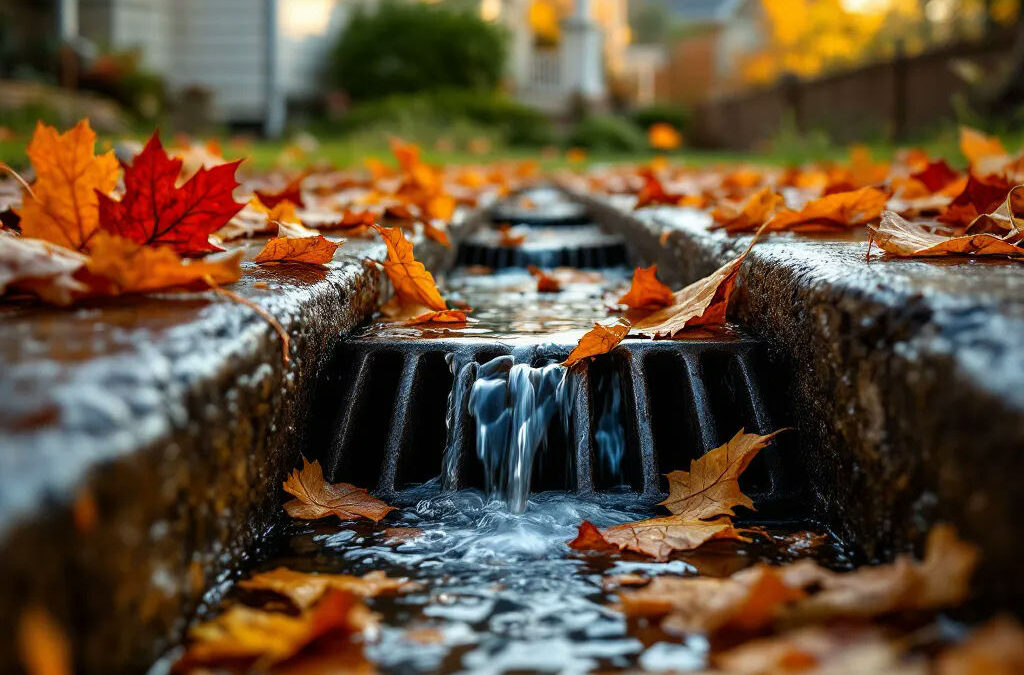Introduction
A well-functioning drainage system is essential for maintaining the integrity of your property’s structure and preventing water damage. As seasons change, various weather conditions can significantly impact the functionality of your drains. Understanding these seasonal effects can help homeowners take proactive measures to safeguard their drainage systems.
Understanding Drain Systems
Components of a Typical Drainage System
A typical drainage system consists of several key components, including pipes, drains, and sewage lines. Pipes transport wastewater away from your home, while drains collect and channel surface water. Sewage lines connect your home to the municipal treatment system, ensuring that waste is properly disposed of. Each component plays a vital role in preventing water buildup and associated damage, which can be exacerbated by seasonal weather changes.
The Role of Drains in Preventing Water Damage
Drains are crucial for managing water flow around your property, mitigating risks such as basement flooding and foundation issues. A well-maintained drainage system prevents excess moisture from accumulating, which can lead to mold growth and structural damage over time. Recognizing the importance of drains in your home’s defense against water damage can motivate timely maintenance and inspections.
Effects of Seasonal Weather Patterns
Winter Weather
During the winter months, freezing temperatures can have a profound impact on drainage systems. Water inside pipes can freeze, leading to an increased risk of pipe bursts and blockages due to ice formation. Homeowners should insulate exposed pipes and monitor their systems closely during freezing weather to prevent these costly issues.
Spring Thaws and Rainfall
When spring arrives, the thawing of winter snow and increased rainfall can overwhelm drainage systems. The rapid influx of water can lead to flooding and overburdened pipes. To prevent these issues, homeowners must prioritize regular maintenance before the spring rains, ensuring that drains are clear and functional. Learn how drain maintenance helps prevent flooding.
Summer Heat and Drought
The summer months can present unique challenges for drainage systems, particularly in areas experiencing drought. Dry soil can lead to shifting and cracking of underground pipes, which can compromise the system’s integrity. Regular maintenance activities such as checking for visible cracks and ensuring proper drainage slope can help mitigate these summer-related risks. Seasonal pressure, like dry spells, also affect surrounding soil health.
Fall Leaves and Debris
Autumn brings a heavy accumulation of leaves and organic matter that can clog drains. As leaves fall, they can obstruct water flow and contribute to local flooding. Homeowners should perform seasonal cleanings and inspections during fall to clear debris and ensure the proper functioning of their drainage systems.
Emergency Drain Services
When to Call for Emergency Drain Services
Understanding when to call for emergency drain services is crucial, especially during severe weather events. Signs of drain distress include slow drainage, unusual odors, and visible leaks around your property. Emergency services are typically available 24/7, offering prompt assistance that can help prevent extensive damage during a weather-related crisis.
Common Emergency Situations Linked to Weather
Several common emergencies are linked to adverse weather conditions, such as flooding resulting from excessive rainfall and blockages caused by storm debris. These situations can escalate quickly, necessitating immediate attention to avoid further complications. Being aware of these potential issues can prepare homeowners to respond swiftly when needed.
Preventive Drain Services
Regular Maintenance Tips
Regular maintenance of your drainage system can significantly reduce the likelihood of emergencies. Professional inspections and routine cleaning schedules should be part of every homeowner’s maintenance plan. These actions can identify potential problems early, allowing for timely interventions that can save time and money. Learn how preventive cleaning helps you avoid major expenses.
Seasonal Checklists for Homeowners
Creating a seasonal checklist is an effective way to prepare for the various weather challenges each season brings. Homeowners should ensure proper preparation for winter, spring, summer, and fall by addressing specific maintenance tasks, such as insulating pipes for winter or clearing debris before heavy rain. Following these checklists can promote a healthier drainage system year-round.
Case Studies and Examples
Real-life examples of weather-related drain issues underline the importance of timely maintenance. In one case, a homeowner faced significant flooding due to neglecting regular inspections, which led to a costly repair process. Conversely, homeowners who implemented proactive measures, such as routine cleaning and inspections, reported far fewer issues and smoother operation of their drain systems throughout seasonal transitions.
Conclusion
Understanding how seasonal weather impacts drain systems is essential for preventing emergencies and maintaining property integrity. Proactive maintenance, including regular inspections and timely preparations for each season, can significantly reduce the risk of water damage. By prioritizing these preventive measures, homeowners can safeguard their properties against the perils of seasonal weather.
Call us today at 916 562-2345 to schedule an inspection or get a free quote on preventive or emergency drain services.


